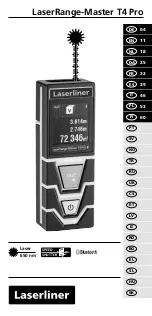
8 • Overview
Gas Tracer Operator’s Manual, CSA Version
Chapter 1: Introduction
Overview
This chapter briefly describes the Gas Tracer. This chapter also describes the Gas
Tracer Operator’s Manual (this document). Table 1 at the end of this chapter lists the
specifications for the Gas Tracer.
About the Gas Tracer
Using an advanced detection system consisting of up to five gas sensors, the Gas
Tracer sample draw gas monitor detects the presence of combustible gas, oxygen
(O
2
), and carbon monoxide (CO) simultaneously. The Gas Tracer’s compact size
and easy-to-use design makes it ideally suited for a wide range of applications,
including sewage treatment plants, utility manholes, tunnels, hazardous waste
sites, power stations, petrochemical refineries, mines, paper mills, drilling rigs,
and fire fighting stations. The Leak Check Mode allows you to pinpoint gas leaks.
The Gas Tracer offers a full range of features, including:
• Simultaneous three-gas monitoring of combustible gases, O
2
, and CO (in
Normal Mode)
• Choice of three operating modes: Normal Mode for typical confined space or
area monitoring, Bar Hole Mode for checking of bar holes when searching for
underground gas leaks, and Leak Check Mode for pinpointing gas leaks
• Sample-drawing pump with up to 50-foot range
• Liquid crystal display (LCD) for complete and understandable information at
a glance
• Distinctive audible/vibrating alarms for dangerous gas conditions and
audible alarms for unit malfunction
• Microprocessor control for reliability, ease of use, and advanced capabilities
• Alarm trend data (when used in Normal Mode)
• Data logging functions (when used in Normal Mode)
• STEL/TWA (when used in Normal Mode) and over range alarm display
• Peak hold and average readouts (when used in Normal Mode)
• Built-in time function
• RF shielded high impact plastic case
• CSA classification for Class I, Division I, Groups A, B, C, and D hazardous
atmospheres









































